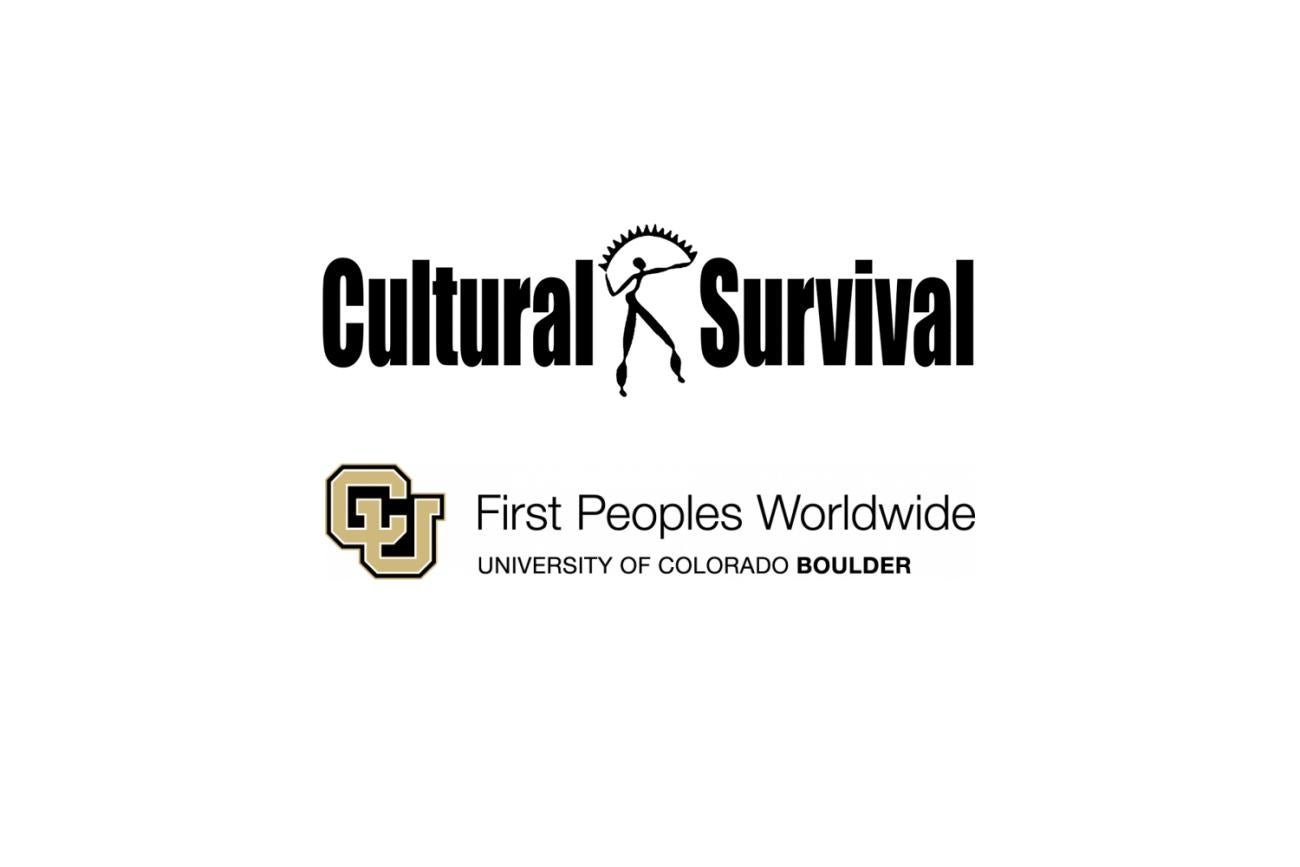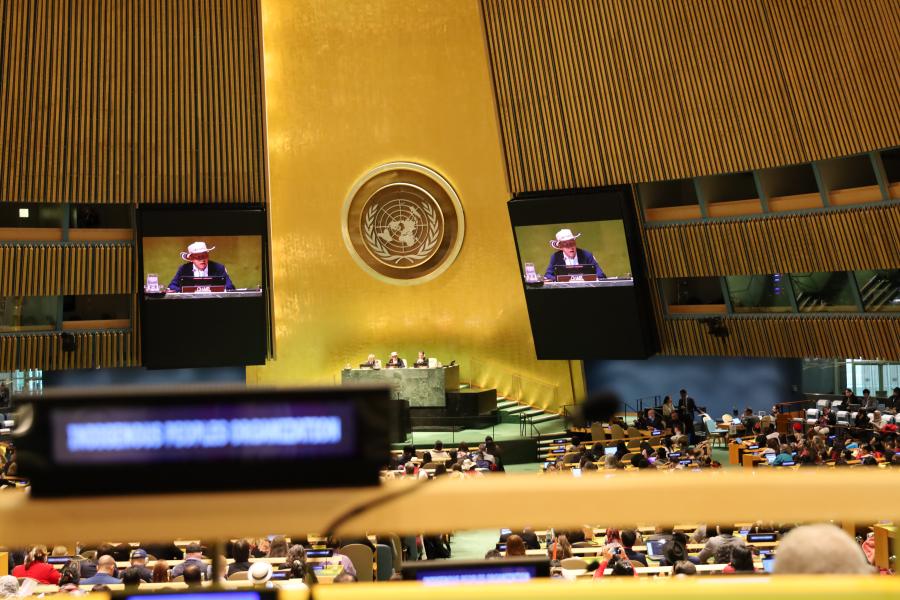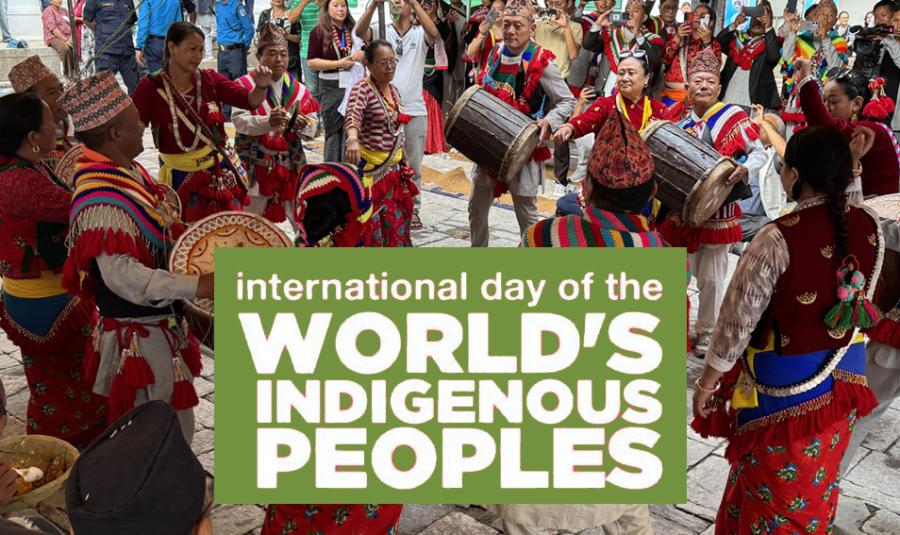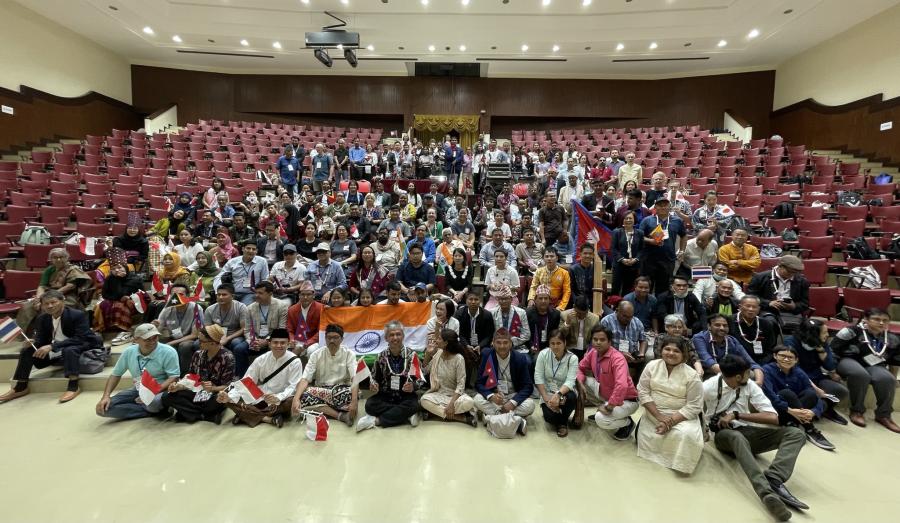
Cultural Survival and First Peoples Worldwide consider it necessary to address a growing international position that combines and equates Indigenous Peoples–and in particular, their affirmed rights to lands and territories and Free, Prior and Informed Consent (FPIC)–with local communities within the term “Indigenous Peoples and Local Communities” or “IPLC.” The combination of these two different entities disregards the collective rights to which Indigenous Peoples are entitled as distinct, self-determining Peoples.
Indigenous Peoples’ rights are enshrined in the United Nations Declaration on the Rights of Indigenous Peoples (UNDRIP) and in other international agreements. The UNDRIP articulates Indigenous Peoples’ rights and unique relationships with their lands, territories, and resources, including rights to maintain traditional connections to lands and territories; to redress for lands that have been taken; and to prevent the storage of hazardous waste or military activities on Indigenous land, among many others. These rights are affirmed to be held by Indigenous Peoples. “Local Communities,” however, is an undefined entity without such articulated rights.
The term “IPLC” came into use primarily within the conservation space when the UN Programme of Work on Protected Areas introduced the term “Indigenous Peoples and Local Communities Conserved Territories and Areas” (ICCAs) in the CBD. The International Union for the Conservation of Nature defines ICCAs as “natural and/or modified ecosystems, containing significant biodiversity values, ecological benefits, and cultural values, voluntarily conserved by indigenous peoples and local communities, through customary laws or other effective means.” Modern conservation movements are coming to recognize Indigenous Peoples’ contributions to protecting and maintaining biodiversity and cultural diversity. Territories where Indigenous communities live cover approximately 25 percent of the Earth’s terrestrial surface and hold 80 percent of the planet’s biodiversity. The amalgamation of “Indigenous Peoples” and “local communities” has been considered a way to recognize the biocultural approaches to conservation that both groups may undertake. Yet this term has concerning implications: it weakens recognition of Indigenous Peoples’ affirmed rights and identities, and it has been imposed without consulting Indigenous Peoples.
The UN has long recognized Indigenous Peoples as a distinct constituency. This position was cemented by the General Assembly when it adopted the UNDRIP, which affirms Indigenous Peoples’ inherent rights. Conflating the two terms has the potential to distort the representation of the cultures and practices of Indigenous Peoples in conservation spheres, as this terminology does not acknowledge the complexity and uniqueness of the meaning of land and territory to Indigenous Peoples.
Treating Indigenous Peoples as separate and distinct entities from local communities is an approach supported by experts in the international human rights space. Notably, the UN Permanent Forum on Indigenous Issues opposes grouping Indigenous Peoples and local communities together in its 21st session report, stating that its stance mirrors that of the UN Special Rapporteur on the Rights of Indigenous Peoples. This topic has also been addressed by the UN Expert Mechanism on the Rights of Indigenous Peoples, which notes some Indigenous Peoples’ concern that being grouped with local communities will undermine their rights as articulated by the UNDRIP.
Indigenous Peoples are characterized in part by their connection to and relationships with their traditional lands. The UNDRIP recognizes the historic injustices Indigenous Peoples have experienced, particularly related to the “colonization and dispossession of their lands, territories and resources” and their rights, “which derive from their political, economic and social structures and from their cultures, spiritual traditions, histories and philosophies, especially their rights to their lands, territories and resources.” The International Labor Organization’s Indigenous and Tribal Peoples Convention (Convention 169), Article 1(b), states its application to:
"peoples in independent countries who are regarded as indigenous on account of their descent from the populations which inhabited the country, or a geographical region to which the country belongs, at the time of conquest or colonization or the establishment of present state boundaries and who, irrespective of their legal status, retain some or all of their own social, economic, cultural and political institutions."
While Indigenous Peoples’ affirmed and specific rights are enshrined in international documents, local communities are not consistently defined and are not necessarily subject to particular collective rights. The use of this combined term can dilute the meaning and strength of Indigenous Peoples’ rights and challenge the protection of specific rights. Law Insider, an international legal resource, collates dozens of disparate definitions for local communities, such as: “any community of people living or having rights or interests in a distinct geographical area;...community members who have an interest in education and the school, including neighboring Métis settlements, First Nations and other members of the public;...a group of individuals who have settled together and continuously inherit production processes and culture or a group of individuals settled together in a village or area and under an eco-cultural system.”
“Local communities” can also apply to myriad groups of people located in close proximity to Indigenous territories whose interests may be in direct opposition to Indigenous Peoples' interests – a situation that occurs regularly. In these critical instances, the conflation of Indigenous Peoples and local communities gives equal standing in decision-making, which may violate Indigenous Peoples’ inherent and internationally enshrined rights, particularly the right to FPIC, by potentially conferring those rights upon local communities whose priorities and decisions may be in direct conflict with those of Indigenous Peoples.
Cultural Survival and First Peoples Worldwide support 1) discontinuing the use of the term “IPLC” and “Indigenous Peoples and Local Communities” and 2) the practical implementation of widespread recognition of the two sets of groups as different entities with distinct interests and rights. While there may at times be overlaps and opportunities for solidarity, local communities do not represent the interests of Indigenous Peoples nor do they share Indigenous Peoples’ status as holders of specific collective rights. Likewise, Indigenous Peoples do not always stand in for local communities. Cultural Survival and First Peoples Worldwide do not wish to minimize the needs of, nor do we oppose, any group that identifies as a Local Community. However, combining and conflating the recognized rights of Indigenous Peoples with those of local communities is harmful to both groups. Those seeking to combine the rights and perspectives of Indigenous Peoples and the rights and perspectives of local communities should consider the ramifications of combining the two under this purview, including violation of the rights recognized in international instruments like the UNDRIP. Cultural Survival and First Peoples Worldwide respectfully request that all institutions retire the term “IPLC” in favor of recognizing both Indigenous Peoples and local communities as two different populations with distinct interests and rights.



